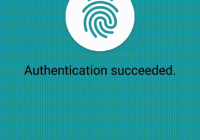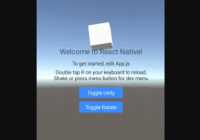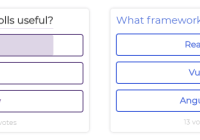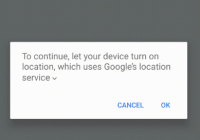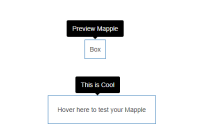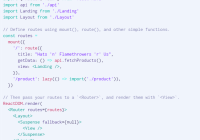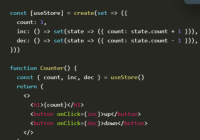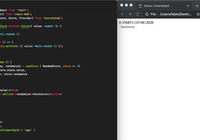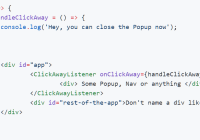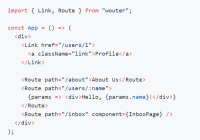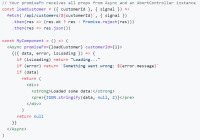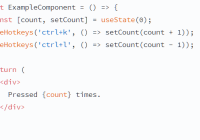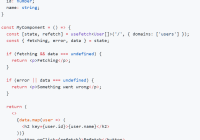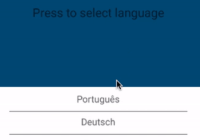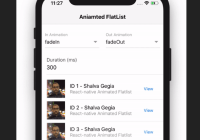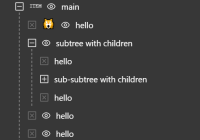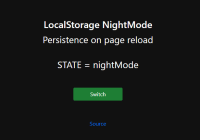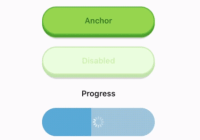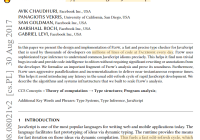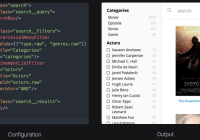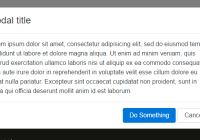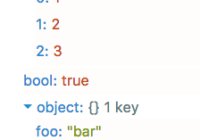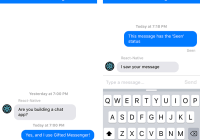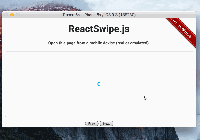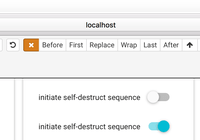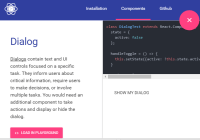react-native-fingerprint-android
Full fingerprint authentication for react native (android only).
Pictured: the example project, located at /example
Example
This is a simplified version. There are a few more concerns you should be aware of. see 'Watch out!'
For the full version, see the example directory.
import Fingerprint from 'react-native-fingerprint-android'; import { ToastAndroid as Toast } from 'react-native'; (async() => { const hardware = await Fingerprint.isHardwareDetected(); const permission = await Fingerprint.hasPermission(); const enrolled = await Fingerprint.hasEnrolledFingerprints(); if (!hardware || !permission || !enrolled) { let message = !enrolled ? 'No fingerprints registered.' : !hardware ? 'This device doesn\'t support fingerprint scanning.' : 'App has no permission.' Toast.show(message, Toast.SHORT); return; } try { await Fingerprint.authenticate(warning => { Toast.show(`Try again: ${warning.message}`, Toast.SHORT); }); } catch(error) { Toast.show(`Authentication aborted: ${error.message}`, Toast.SHORT); } Toast.show("Auth successful!", Toast.SHORT); })();API
All functions & constants are static.
.authenticate(warningCallback:?(response:FingerprintError) => {}):Promise<null>
Starts authentication flow, with a optional callback for warning messages, instructing your user why authentication failed.
Returns a Promise.
Resolving
Authentication was successful if this promise gets resolved.
There are no parameters.
Rejection
Authentication has failed if the promise gets rejected.
Callback will receive a single parameter with the following structure: (example)
{ "code": 1, "message": "The hardware is unavailable. Try again later." }This code will be match one of the following constants in the FingerprintAndroid module:
| Constant | Description |
|---|---|
| FingerprintAndroid.FINGERPRINT_ERROR_CANCELED | The operation was canceled because the fingerprint sensor is unavailable. |
| FingerprintAndroid.FINGERPRINT_ERROR_HW_UNAVAILABLE | The hardware is unavailable. |
| FingerprintAndroid.FINGERPRINT_ERROR_LOCKOUT | The operation was canceled because the API is locked out due to too many attempts. |
| FingerprintAndroid.FINGERPRINT_ERROR_NO_SPACE | Error state returned for operations like enrollment; the operation cannot be completed because there's not enough storage remaining to complete the operation. |
| FingerprintAndroid.FINGERPRINT_ERROR_TIMEOUT | Error state returned when the current request has been running too long. |
| FingerprintAndroid.FINGERPRINT_ERROR_UNABLE_TO_PROCESS | Error state returned when the sensor was unable to process the current image. |
For more info on the constants, see Android FingerprintManager docs
warningCallback
warningCallback is the only and optional parameter to .authenticate().
If present, warningCallback gets called with a single parameter, a object with the following structure:
{ "code": 1, "message": "Only acquired a partial fingerprint. Try again." }This code will be match one of the following constants in FingerprintAndroid:
| Constant | Description |
|---|---|
| FingerprintAndroid.FINGERPRINT_ACQUIRED_IMAGER_DIRTY | The fingerprint image was too noisy due to suspected or detected dirt on the sensor. |
| FingerprintAndroid.FINGERPRINT_ACQUIRED_INSUFFICIENT | The fingerprint image was too noisy to process due to a detected condition |
| FingerprintAndroid.FINGERPRINT_ACQUIRED_PARTIAL | Only a partial fingerprint image was detected. |
| FingerprintAndroid.FINGERPRINT_ACQUIRED_TOO_FAST | The fingerprint image was incomplete due to quick motion. |
| FingerprintAndroid.FINGERPRINT_ACQUIRED_TOO_SLOW | The fingerprint image was unreadable due to lack of motion. |
| FingerprintAndroid.FINGERPRINT_ACQUIRED_AUTH_FAILED | Custom constant added by react-native-fingerprint-android, to simplify API. This code is used when a fingerprint was recognized but not valid. |
For more info on the constants, see Android FingerprintManager docs
.isAuthenticationCanceled(): Promise<boolean>
Tells you whether or not authentication is running or not.
.hasPermission(): Promise<boolean>
Will check if android.permission.USE_FINGERPRINT is granted to this app. (should always return true if you add the permission to your AndroidManifest...)
hasEnrolledFingerprints(): Promise<boolean>
Determine if there is at least one fingerprint enrolled.
isHardwareDetected(): Promise<boolean>
Determine if fingerprint hardware is present and functional.
cancelAuthentication
Manually cancel the authentication, this is required to follow the design principles in the design guidelines. When called this will trigger a rejection of the original authenticate promise.
Watch out!
React Native Fingerprint Android is mostly just a set of bindings to Android FingerprintManager.
Alas, it's very low level. You are still responsible for:
- Making sure the device has fingerprints enrolled by calling
FingerprintAndroid.hasEnrolledFingerprints()(if you don't check this before starting authentication, any valid fingerprint will be accepted) - Making sure your app has proper permissions setup (see installation guide below)
- Making sure device has supported hardware by calling
FingerprintAndroid.isHardwareDetected() - Making sure you display the correct icon, as defined by the design guidelines.
- Restarting authentication if screen turns off. (see example project for on an example on how to do that)
If you don't do any of the checks before calling FingerprintAndroid.authenticate, it will either directly fail, or your app will contain security vulnerabilities.
Installation
npm i react-native-fingerprint-android --save
Whether you're using the automatic installation method or not, don't forget to add the permission to your manifest:
android/app/src/main/AndroidManifest.xml
<manifest xmlns:android="http://schemas.android.com/apk/res/android" package="com.example" android:versionCode="1" android:versionName="1.0"> <uses-permission android:name="android.permission.INTERNET" /> <uses-permission android:name="android.permission.SYSTEM_ALERT_WINDOW"/> + <uses-permission android:name="android.permission.USE_FINGERPRINT" />Automatic installation (recommended)
Run react-native link after npm install. That should be it.
Manual installation
Same old, same old...
android/app/build.gradle
dependencies { + compile project(path: ':react-native-fingerprint-android') compile fileTree(dir: "libs", include: ["*.jar"]) compile "com.android.support:appcompat-v7:23.0.1" compile "com.facebook.react:react-native:+" // From node_modules }android/settings.gradle
include ':app' +include ':react-native-fingerprint-android' +project(':react-native-fingerprint-android').projectDir = new File(rootProject.projectDir, '../node_modules/react-native-fingerprint-android/android')android/app/src/main/java/com.your.package/MainApplication.java
import java.util.Arrays; import java.util.List; +import io.jari.fingerprint.FingerprintPackage; @Override protected List<ReactPackage> getPackages() { return Arrays.<ReactPackage>asList( - new MainReactPackage() + new MainReactPackage(), + new FingerprintPackage() ); }Todo
- CryptoObject support
- Samsung fingerprint SDK?
